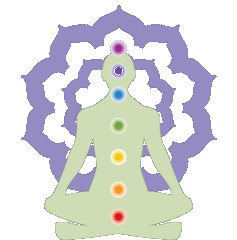Yoga is more about training the mind than the body. During our practice, we learn how to not get caught up in thoughts, but instead, how to drop them and become free of them. There are only five kinds of thoughts: Of all the countless thought impressions that come into the mind field, which form the matrix of the barrier or veil covering the true Self (or center of consciousness), they all fall into one or more of these five categories. In other words, while there are many individual thought impressions, there are not countless types of thoughts to deal with, but only five. This can help greatly in seeing the underlying simplicity of the process of Yoga, not getting lost in the apparent multiplicity in the gross and subtle realms.
Pramana: right
Viparyaya: wrong
Vikalpa: imagined
Nidra: deep sleep
Smriti: memory
Witnessing the five kinds of thoughts: By learning to observe the thinking process, and then to discriminate between these five types of mental objects, we start to gain a mastery over them, and their ability to control our actions, speech, and thoughts.
With mastery of witnessing: As that mastery comes within reach, we gradually find a neutral, non-attached (Sutras 1.15, 3.38) stance of witnessing, where we can observe the entire flow of mind, while remaining peacefully undisturbed, unaffected, and uninvolved. Meditation can systematically deepen.
Without mastery of witnessing: Without that mastery, we become victims to our own unconscious mental process, losing free choice in external life as well as the ability to experience deep meditation.
Monday, July 28, 2008
Subscribe to:
Post Comments (Atom)





No comments:
Post a Comment